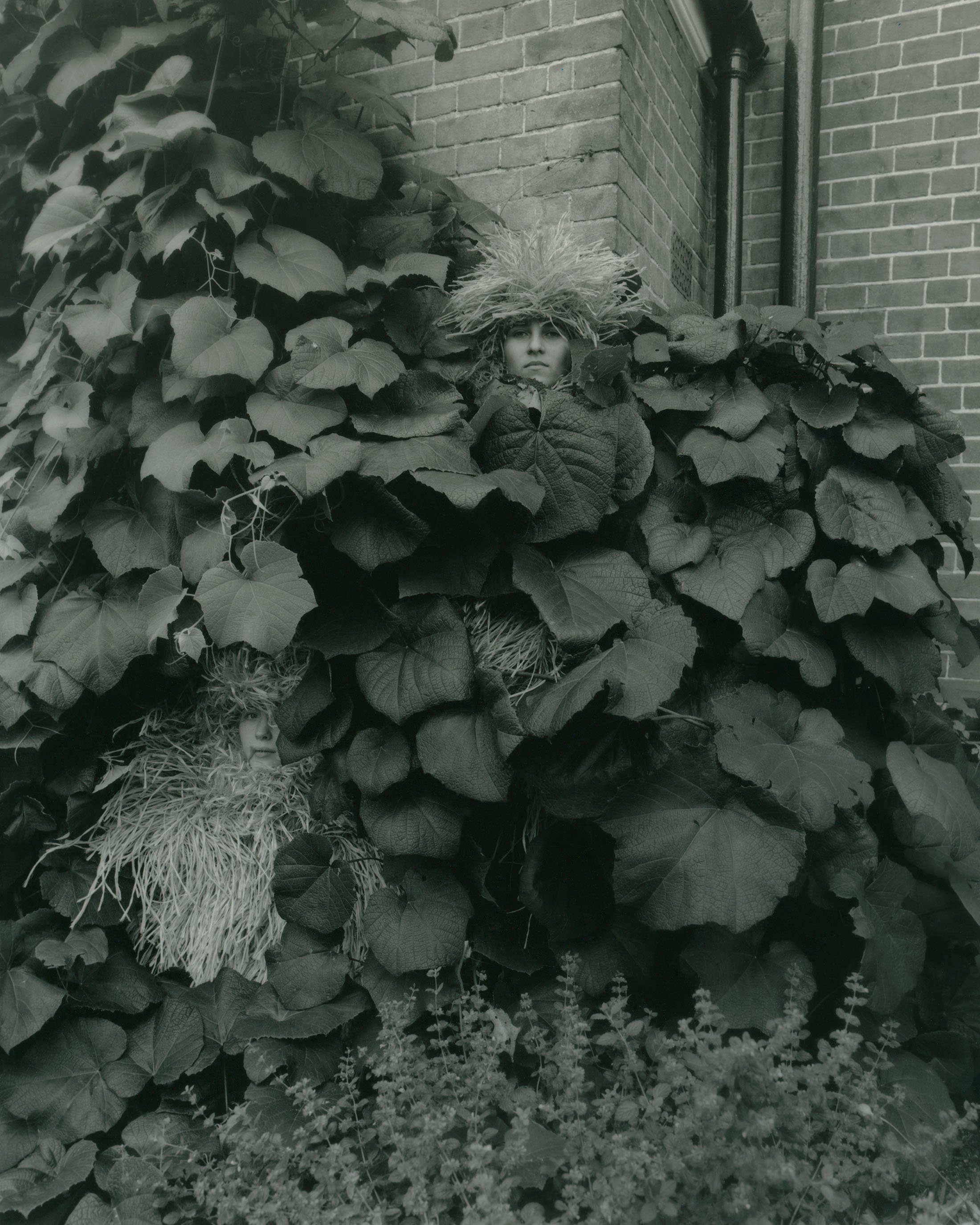The Tall Tale
The Tall Tale is a project created by the UK-based team, Ellen Stewart, a photographer; Darcey Fleming, a designer and stylist; and Adam Turner, a photo assistant. The project was shot at Darcey’s home in West Berkshire and involved her hand-woven artwork made from recycled baler twine. The subjects in the project are closely related to Darcey on a personal or professional level, including family members and farmers who donate twine to her. The created network provides the story with an additional layer of connections in a small community and the effect each person has on the other. The black and white images contribute to the central theme of the folk traditions and usage by farmers of baler twine as a historical retrospective.
The team explains the connection of this project to folklore, “Ellen's choice of shooting was partly inspired by archival English folk photos and fables.” We speak with the team about the collaboration, Darcey’s artwork, their inspiration, and the aesthetics chosen for this project. The team describes the significance of covering the subjects in the exaggerated twine artwork to almost fully hide the bodies while also working to create a pagan-like, fairy tale atmosphere to enhance the chosen topic, playing with the concept of the make-believe created world.
Photography by Ellen Stewart Designer and Stylist Darcey Fleming Photo Assistant Adam Turner Models Carolyn Gardener Nancy Christensen Matt Christensen Nathan Elliott Vicky Elliott Holly Siddle Betty Fleming
‘The project is a collaboration between Darcey Fleming’s handwoven wearable artworks and Ellen Stewart's photography practice. The main narrative for the project is creating a place where Darcey's creations can work referencing the folk traditions of the land with a focus on the historic uses of weaving and making.’
The project is a collaboration between Darcey Fleming’s handwoven wearable artworks and Ellen Stewart's photography practice. The main narrative for the project is creating a place where Darcey's creations can work referencing the folk traditions of the land with a focus on the historic uses of weaving and making.
Darcey’s artworks are made from recycled baler twine. Baler twine is used by farmers to tie hay bales together. After use, it is added to a landfill. Darcey reuses this material; farmers donate the twines to her, and she also finds it discarded around her childhood home. Darcey meticulously hand-weaves these twines into artworks. She puts a contemporary twist on the traditional weaving technique. Darcey’s making process is constant and obsessive, and the repetition of the process is both therapeutic and a necessity for her.
‘The story was shot at Darcey’s family home, whilst the individuals photographed were all significant to the way Darcey’s practice works.’
Darcey styled the individuals photographed so they were covered in her twine creations. They wanted the bodies to be almost engulfed by and hidden within the twine. Faces poke out, and arms emerge...
The story was shot at Darcey’s family home, whilst the individuals photographed were all significant to the way Darcey’s practice works; a local farmer's children and a family friend who donated twine to Darcey, two gardeners who work in Darcey’s family garden and Darcey’s sister and friend. The countryside setting, with its natural organic growth, aesthetically compliments the artworks, further adding to the ambiguous, almost ritualistic, and pagan-like images.
‘Ellen's choice of shooting was partly inspired by archival English folk photos and fables. She describes loving the way how these historic tall tales are difficult to believe, both in fanciful nature and exaggeration.’
Ellen's choice of shooting was partly inspired by archival English folk photos and fables. She describes loving the way how these historic tall tales are difficult to believe, both in fanciful nature and exaggeration, which inspired creating this make-believe world where Darcey's garments live. She combines these references with that of the physical nature of the twine garments, how their strong and grisly nature can both hide the person wearing them whilst also illuminating other body parts.
Ellen describes how Darcey's garments are already obscure as pieces by themselves, each one has its own individual and wonderful personality, which changes again when placed on certain models, so it was important to get this across in the photos. For instance, she describes how some of the smaller headpieces had a peaking-out feel, so decided to shoot one of the models poking out the top of the bushes, whereas other pieces had more of an encompassing feel, so shot more enveloped by nature.










